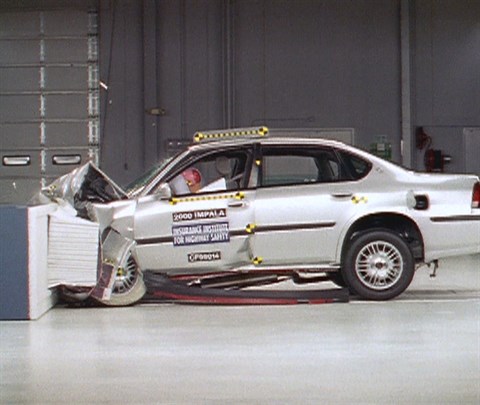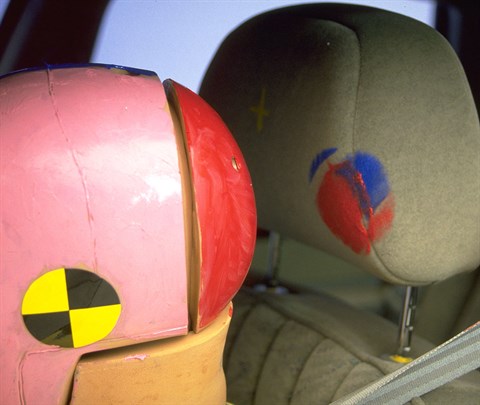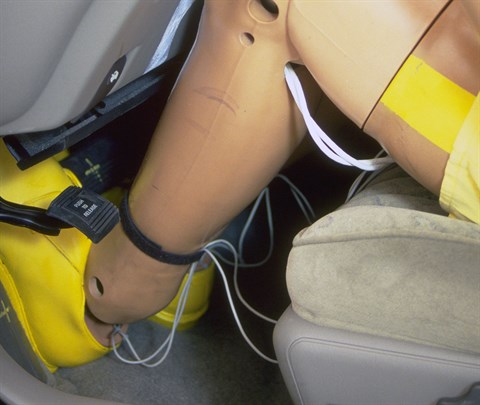Moderate overlap front: original test
Rating applies to 2000-05 models
Tested vehicle: 2000 Chevrolet Impala 4-door
The Chevrolet Impala was reintroduced for the 2000 model year as a somewhat smaller front-wheel-drive sedan.
| Evaluation criteria | Rating |
|---|---|
| Overall evaluation | |
| Structure and safety cage | |
| Driver injury measures | |
| Head/neck | |
| Chest | |
| Leg/foot, left | |
| Leg/foot, right | |
| Driver restraints and dummy kinematics | |

Action shot taken during the frontal offset crash test.

The dummy's position in relation to the steering wheel and instrument panel after the crash test indicates that the driver's survival space was maintained well.

During rebound, the dummy's head hit only the head restraint.

Although intrusion into the footwell area was minimal, left foot acceleration was high, indicating the possibility of injury.
Head restraints & seats
Seat type: Leather bucket seats
| Overall evaluation | |
|---|---|
| Dynamic rating | |
| Seat/head restraint geometry |
Seat type: Cloth bucket seats
| Overall evaluation | |
|---|---|
| Dynamic rating | |
| Seat/head restraint geometry |
About the head restraint & seat test
Currently, IIHS tests apply only to front seats.
